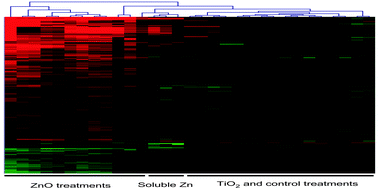Abstract
The gene transcript profile responses to metal

- This article is part of the themed collection: Metal Toxicity
* Corresponding authors
a
Department of Pharmacology and Toxicology, University of Utah, 30 S. 2000 East, Salt Lake City, Utah, USA
E-mail:
philip.moos@utah.edu
Fax: 801-585-5111
Tel: 801-585-5952
b Department of Dermatology, University of Utah, Salt Lake City, Utah 84112
The gene transcript profile responses to metal

 Please wait while we load your content...
Something went wrong. Try again?
Please wait while we load your content...
Something went wrong. Try again?
 Fetching data from CrossRef.
Fetching data from CrossRef.
This may take some time to load.
Loading related content
